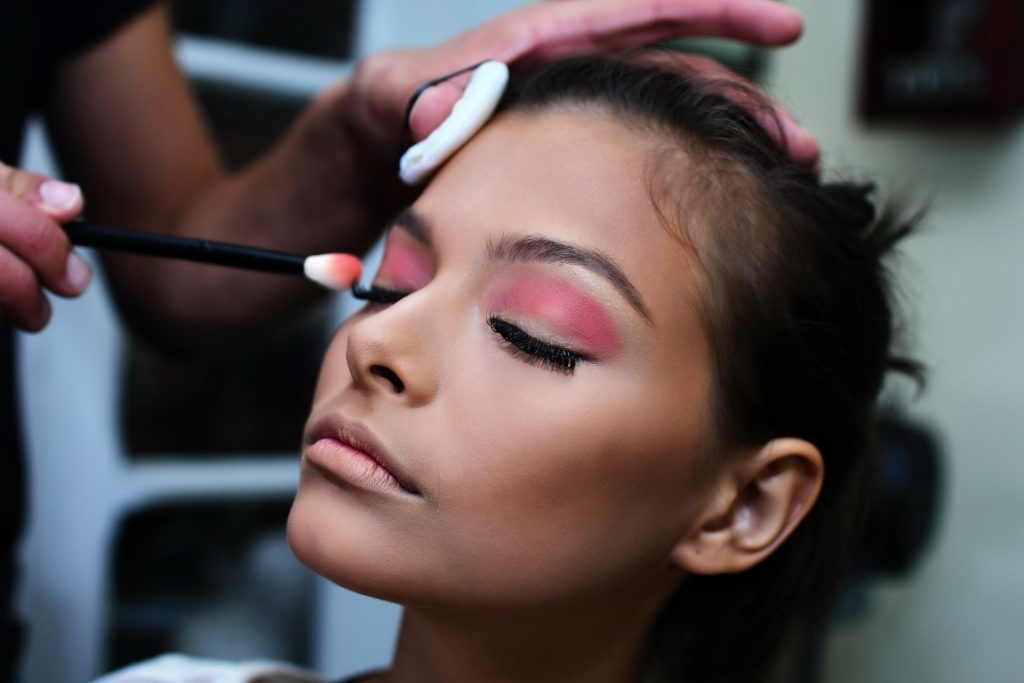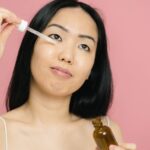Have you have ongoing problems with your makeup sliding off your face? Primers, setting powders, and even moisturizers have all been tried, but to no avail. The quest for novelty might make it difficult to settle on the ideal purchase.
And the battle is real when you’re at work and your makeup keeps melting off your face and you have to keep touching it up.
Your mascara, as if that weren’t enough, never seems to last all day long. Even the waterproof ones you keep re-applying find their effectiveness waning the moment a tear rolls down your face after a good chuckle.
However, you need not fret; we have remedies that will aid in your solution of makeup never stays on even with primer and making it last all day. Keep reading to learn about the benefits of priming your face with the correct product.
Why Does My Makeup Never Stay On Even With Primer?
There are a lot of elements in the primer that work together to keep your makeup in place all day. Always use a primer before applying foundation or concealer to smooth out fine lines and wrinkles on your skin. You use it so that your makeup lasts longer and doesn’t cake or seem uneven.
Using a primer in the morning will help keep your skin from producing too much oil and looking glossy by noon. Makeup primers have been developed with components like silica, which absorbs excess sebum, titanium dioxide, which absorbs UV rays, and other essential minerals that safeguard our sensitive face skin, such as zinc oxide, which prevents acne.
It’s important to know which primers to use with certain bases. Applying a primer before applying powder foundation can increase the foundation’s coverage and help you prevent issues like dry spots.
Primers should always be used before applying makeup since they help cosmetics apply more smoothly, stay longer without flaking, and need fewer touch-ups during the day. You may also blame these things for your makeup smudging even after using a primer.
-
Your Technique Is All Wrong
Due to the various steps involved, the process of applying makeup may be rather involved. If you use your primer after your foundation and concealer, it won’t accomplish its job and you’ll finish up with the incorrect results.
A primer should be used as a base before applying any other cosmetics to the face. It’s there to keep your skin safe from the chemicals in cosmetics. It’s also important to avoid applying too much, since this can need further touch-ups during the day.
-
You Have the Incorrect Products in Use.
There are several primers available, so it’s best to test out a couple before settling on the one that works best for your skin. Applying primer won’t fix issues like dry spots that could already be there. Don’t bother with primer until you’ve fixed any problems you suspect could exist. Not utilizing a primer that works for your skin will prevent you from further damaging your sensitive skin.
-
You’re Using the Wrong Makeup for Your Skin Type
Makeup primer won’t solve problems caused by using cosmetics that aren’t suitable for your skin type. If the primer is not formulated for oily skin, for instance, it will make the problem much worse. Before making any purchases, you should determine your skin type.
-
The Primer Is Not Being Used Properly By You.
Always put primer into creases and lines, since this is the closest it will go to your skin’s surface. Putting primer simply on your cheekbones or under your eyes, as many people do, can leave you with dry spots after you apply foundation on top. Start by using a primer if necessary, then apply the rest of your makeup as usual.
Why Does My Foundation Look Patchy Even With Primer?
Using a primer before to applying foundation or powder can improve the longevity of your makeup. However, if your skin tends to produce excess oil, you may encounter some challenges.
When applying several items simultaneously, you shouldn’t moisturize first as most women do before doing makeup. No amount of primer will prevent your skin from looking uneven.
So what should I do?
Finding a solution that can help manage oil production throughout the day is essential if you have oily skin and are still experiencing foundation issues. Loose or pressed powders, liquid foundations built with mattifying components like silica, oil-free gel-based solutions like mineral makeup, and primers designed for oily skin are all great options.
Powder foundations are great for oily skin because they include chemicals that assist to regulate sebum production. Additionally, they provide the highest level of coverage, making them perfect for covering up grease marks throughout the day. Additionally, liquid foundations may be effective, provided that they do not include any oils.
Why Does My Foundation Not Stay On My Face?
There are probably some blunders you made in the application process if your foundation keeps slipping off your face and your makeup never stays on even with primer. Some common blunders people make while applying foundation are as follows:
- You neglected to put foundation on problem spots.
- To combat your oily skin, you utilized a rich, creamy moisturizer before applying your makeup.
- Because of the lack of cleanliness of your brushes, you may be unwittingly transferring germs from your brushes to your face when you apply foundation. Maintain a regular cleaning schedule for them.
- The filth that has settled into your pores may be easily removed by increasing your frequency of washing. Remember that exfoliating, in addition to cleaning, may aid in removing dirt and oil from your pores.
Method for keeping your foundation stay on your face
- Applying makeup on dry skin is a bad idea, so always moisturize beforehand. You may then apply the remainder of your makeup knowing that some moisture will already be locked in.
- Then, prepare your face well before applying foundation. By prepping the skin and adding moisture, a good primer can help your foundation last longer.
- Make careful to use a thin layer of foundation after applying primer.
- Apply a setting powder with a puff after you’ve applied your foundation to keep your makeup in place all day. Using a setting powder will ensure that your face remains matte and fresh all day long.
How Do I Get My Makeup To Stay On All Day?
The goal of applying makeup to your face is to have it remain on for the duration of the day. Without worrying that your makeup is cakey or uneven, you may confidently go about your day. Makeup products, whether for oily or dry skin, must first be appropriate for your skin type. Then learn the methods that can increase the duration of your makeup. In order to extend the amount of time your makeup lasts, consider the following advice.
-
Applying makeup on dry skin is a bad idea, so moisturize beforehand.
Makeup that seems too heavy or caked on may be avoided by using a liquid foundation in small layers and blending it in well, rather than applying it in patches. To prevent your skin from drying out over the day, use moisturizer once more after applying foundation.
-
Apply a primer before applying any cosmetics.
A barrier between your skin and the product means you may use highly pigmented cosmetics without having to worry about blending them in too much. Primers, which often include oil-absorbing silicone, are useful if your T-zone tends to become shiny.
-
Use just the smallest amounts of powder and apply it evenly on your face using a sponge or a brush.
Under-eye dark circles, redness, and other flaws may all be covered up using concealer. As this region has extremely delicate skin, too much product will make it look and feel cakey.
Applying mascara towards the end of your cosmetic routine prevents your lashes from clumping together and adds volume. Make sure to curl them first for maximum effect.
Conclusion
In conclusion, everyone is looking for tried-and-true beauty items that can help them attain their ideal appearance. Making your face seem good is never easy, but mastering the techniques for applying your favorite cosmetics may make a world of difference.
Stop buying things on the spur of the moment since you can wind yourself with stuff you don’t want or need. Have a clear idea of what you want before going into a beauty supply store.
You shouldn’t rush out and buy anything just because it looks pretty; the same goes for your cosmetics. Finally, remember that less is more and use just one color for each eyelid and a different shade for the base of your eyelids to avoid the unsightly smudge and running that occurs when using many shades.







